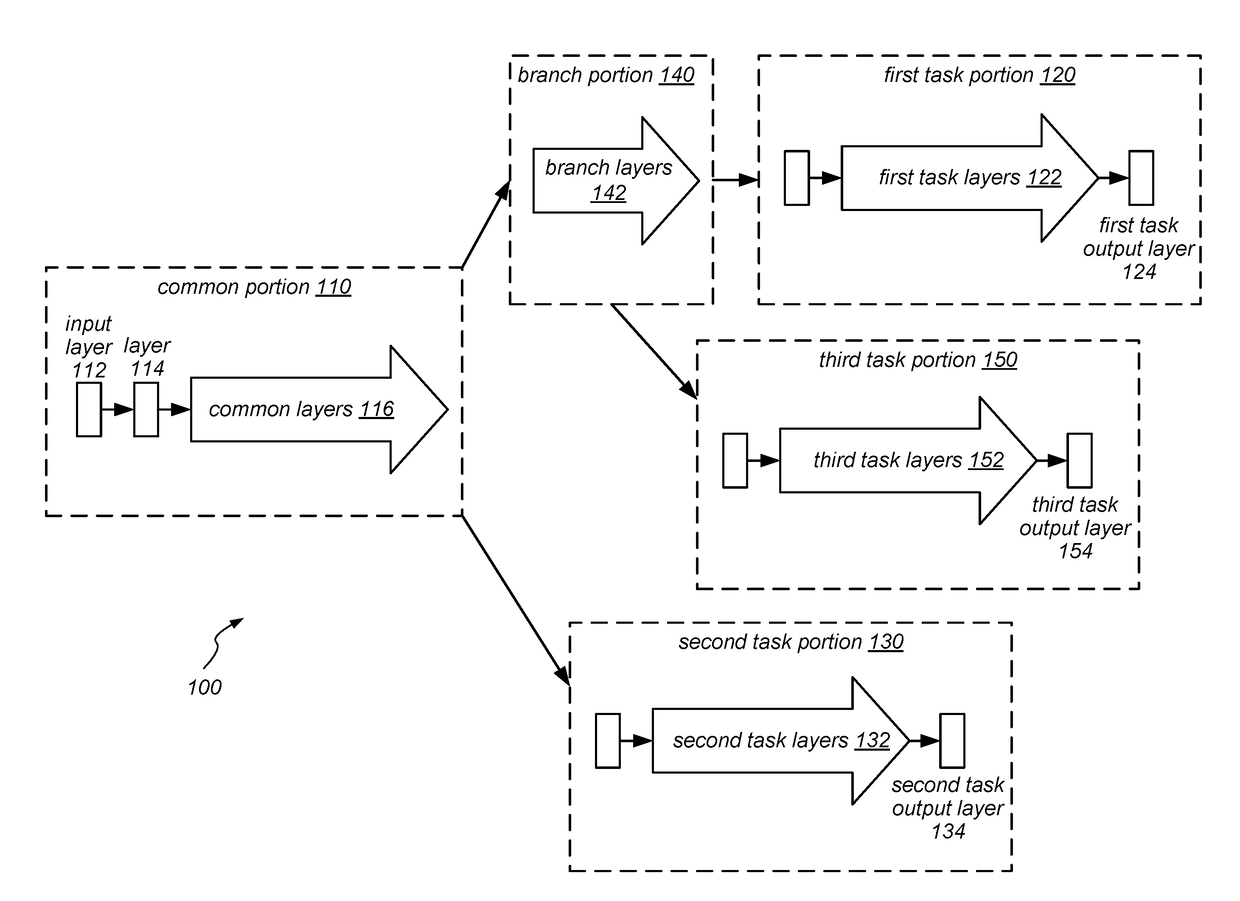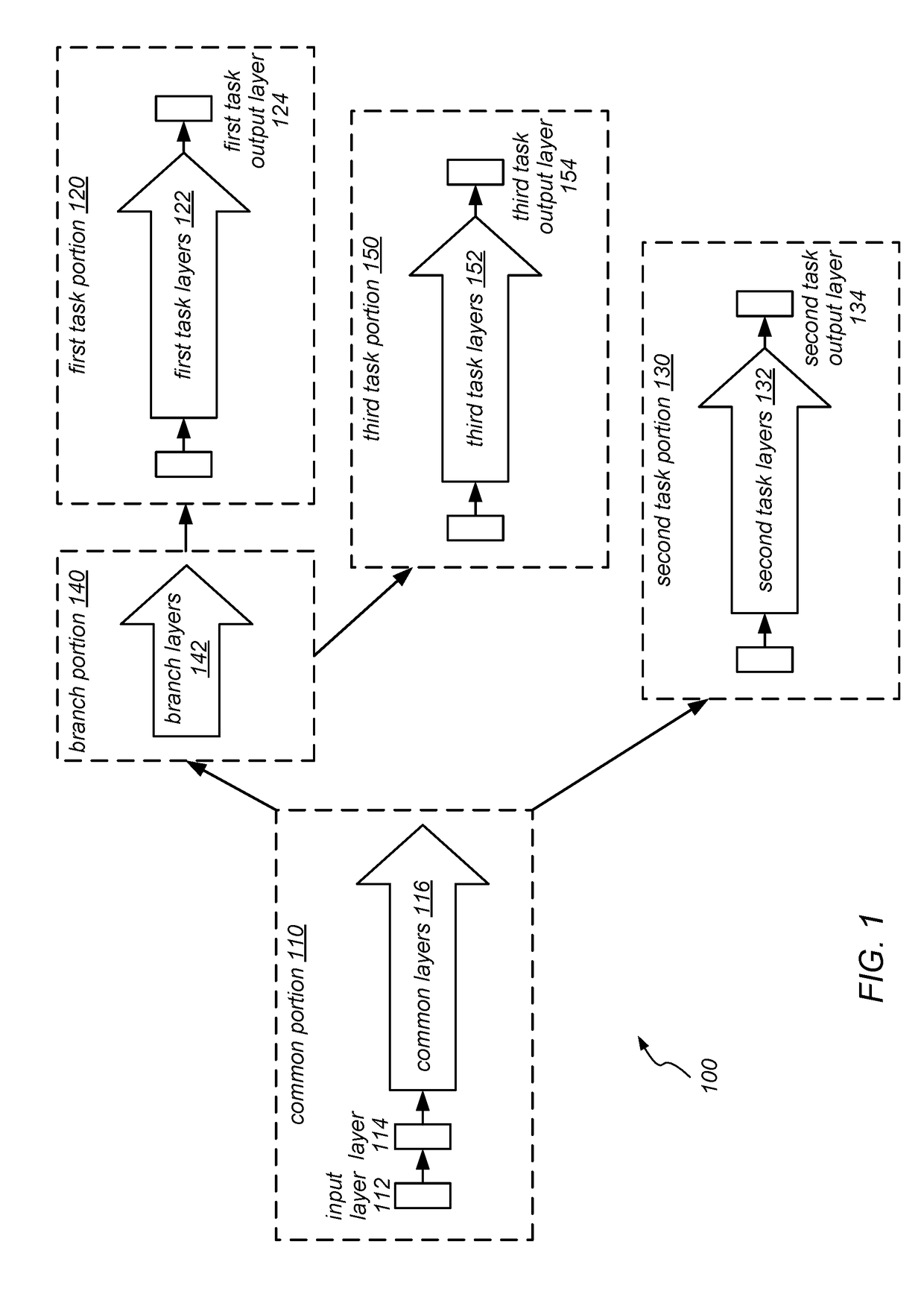Partially shared neural networks for multiple tasks
a neural network and task technology, applied in the field of system and algorithm for machine learning and machine learning models, can solve the problems of not easily scalable, not easy to scale, and add to the cost of such multitask systems, so as to achieve the effect of increasing efficiency, working extremely efficiently, and increasing efficiency
- Summary
- Abstract
- Description
- Claims
- Application Information
AI Technical Summary
Benefits of technology
Problems solved by technology
Method used
Image
Examples
Embodiment Construction
[0004]Described herein are methods, systems and / or techniques for building and using a multitask neural network that may be used to perform multiple inference tasks based on an input data. For example, for a neural network that perform image analysis, one inference task may be to recognize a feature in the image (e.g., a person), and a second inference task may be to convert the image into a pixel map which partitions the image into sections (e.g., ground and sky). The neurons or nodes in the multitask neural network may be organized into layers, which correspond to different stages of the inferences process. The neural network may include a common portion of a set of common layers, whose generated output, or intermediate results, are used by all of the inference tasks. The neuron network may also include other portions that are dedicated to only one task, or only to a subset of the tasks that the neural network is configured to perform. When an input data is received, the neural ne...
PUM
 Login to View More
Login to View More Abstract
Description
Claims
Application Information
 Login to View More
Login to View More - R&D
- Intellectual Property
- Life Sciences
- Materials
- Tech Scout
- Unparalleled Data Quality
- Higher Quality Content
- 60% Fewer Hallucinations
Browse by: Latest US Patents, China's latest patents, Technical Efficacy Thesaurus, Application Domain, Technology Topic, Popular Technical Reports.
© 2025 PatSnap. All rights reserved.Legal|Privacy policy|Modern Slavery Act Transparency Statement|Sitemap|About US| Contact US: help@patsnap.com



